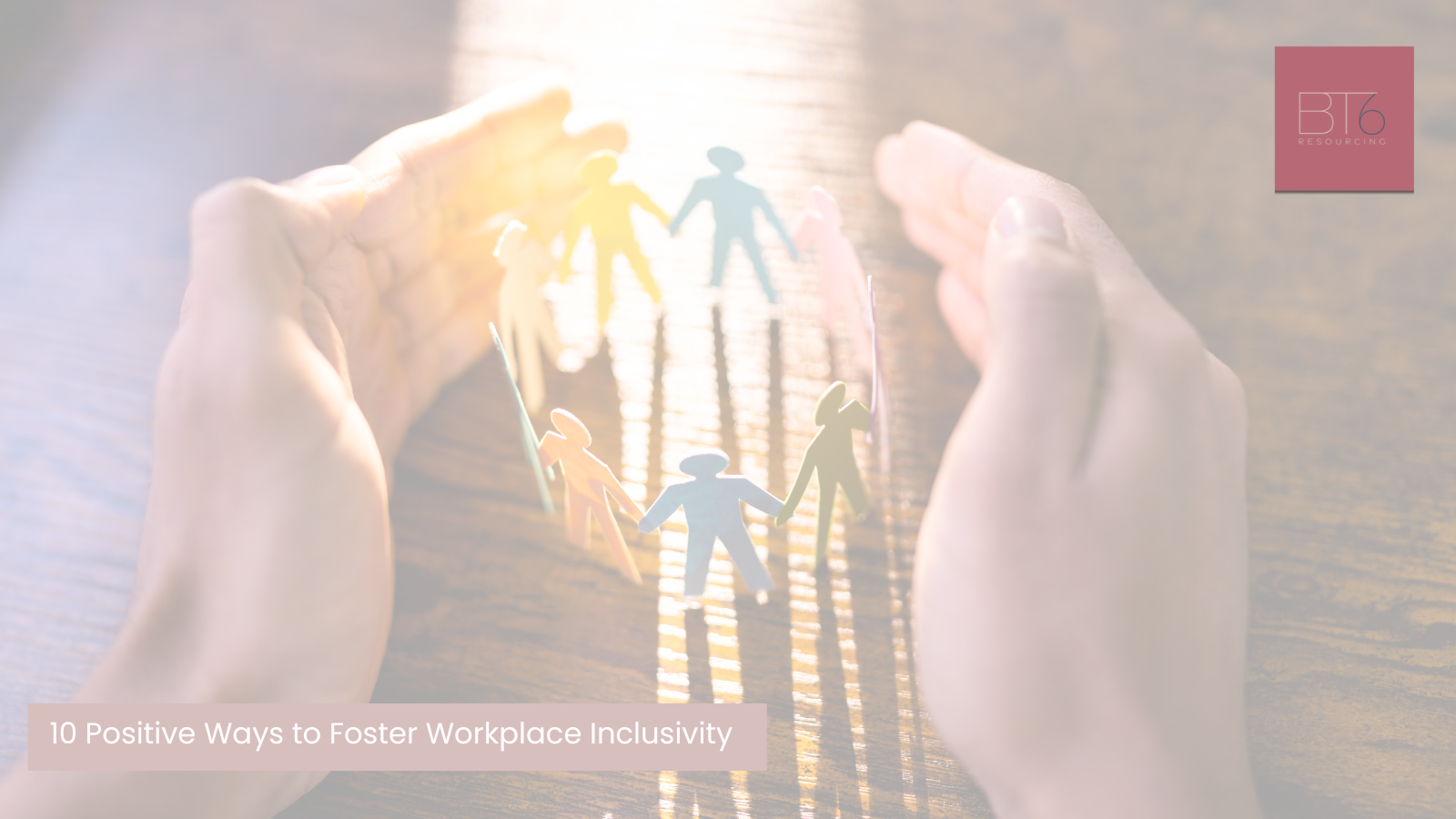Inclusivity in the workplace is not just a buzzword; it's a fundamental aspect of building a thriving, innovative, and harmonious work environment. When employees feel valued and included, they are more engaged, productive, and committed to their organisations. It also enhances creativity and problem-solving by bringing together diverse perspectives. To help your workplace become more inclusive, on the BT6 blog today we share ten powerful strategies you can implement:
Create a Diverse Workforce: The first step in fostering inclusivity is to hire a diverse group of employees. This means actively seeking out individuals from different backgrounds, ethnicities, genders, abilities, and experiences. A diverse workforce brings in a wide range of perspectives and ideas.
Implement Inclusive Hiring Practices: Review your hiring practices to ensure they are free from biases. Use diverse interview panels, blind application processes, and standardised interview questions to minimise unconscious biases that may influence hiring decisions.
Provide Diversity and Inclusion Training: Mandatory diversity and inclusion training can help employees understand the importance of inclusivity and equip them with the skills to foster it in the workplace. These programs can also address unconscious biases.
Establish Inclusive Policies: Develop and communicate policies that promote inclusivity. These policies should cover everything from anti-discrimination to reasonable accommodations for employees with disabilities. Ensure that these policies are easily accessible and known to all employees.
Encourage Open Communication: Create a culture of open communication where employees feel safe sharing their thoughts and concerns. Establish regular feedback mechanisms and anonymous reporting systems for incidents of discrimination or bias.
Celebrate Differences: Acknowledge and celebrate different cultural, religious, and other important events or holidays within your organisation. This can help employees feel recognised and valued for their unique backgrounds.
Offer Flexibility and Accessibility: Accommodate employees' diverse needs by offering flexible work arrangements, accessibility features, and resources to support various physical and mental health conditions. This demonstrates that you value and support all employees.
Mentoring and Sponsorship Programs: Establish mentoring and sponsorship programs that pair employees from underrepresented groups with more experienced colleagues. This helps them navigate their careers, build confidence, and access opportunities.
Promote Inclusive Leadership: Encourage leaders to lead by example when it comes to inclusivity. Leaders should actively support diversity initiatives, seek out diverse opinions, and hold themselves accountable for creating an inclusive workplace.
Measure and Track Progress: Regularly assess the effectiveness of your inclusivity efforts. Use metrics such as diversity representation, employee engagement, and satisfaction to track progress. This data can guide adjustments and improvements in your strategies.
Inclusivity is not a one-time effort but an ongoing commitment. It's essential to foster an environment where all employees feel respected, valued, and heard. As you work towards greater inclusivity, remember that it benefits not only individual employees but also your organisation as a whole, which leads to greater innovation, increased productivity, and a more positive work culture.
By implementing these powerful strategies, you can make significant strides toward creating a more inclusive workplace for everyone!
See more work-related tips and advice over on the BT6 blog

